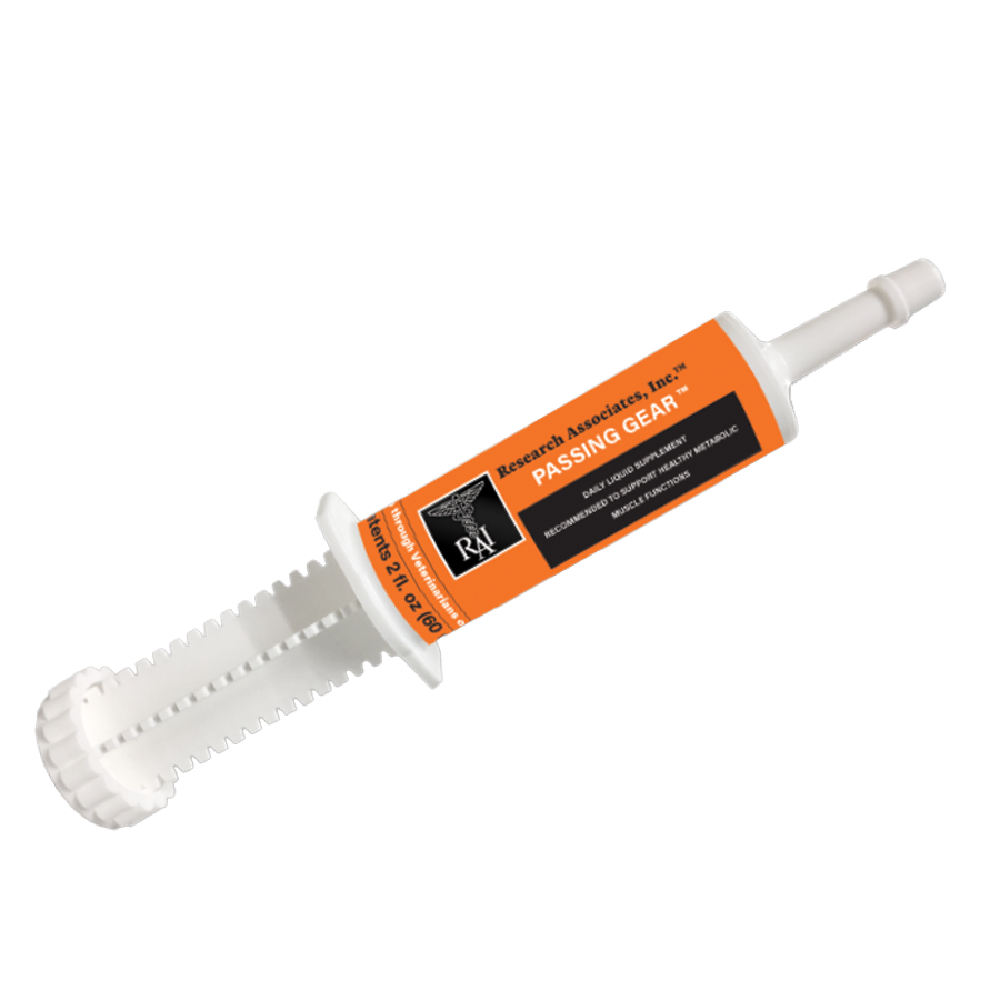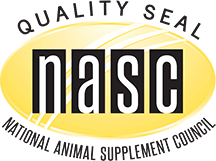About Us
Why Choose Us
Manufacturing proven horse supplements and products to fit the need of every horse owner!
Research Associates, Inc™ manufactures veterinarian approved quality horse products. We were founded on several generations of horse care experience with Veterinarian oversight.
All Research Associates, Inc™ products are thoroughly tested by Equine Veterinarians before entering the marketplace.
If you are interested in collaborating with us in the field of researching natural-based products to promote health in horses, please contact us here. Research Associates would like to hear from you!
Our History
The first Veterinary Doctor to consult with us was Dr. Burnham, who did all the premarket testing of Cough Ease™, Hematocrit™, Apple-X™ and AzoturX™. Dr. Burnham was a founding member of AAEP, the Association of Equine Practitioners, since its inception in 1956. He graduated from Michigan State and was active in the Chicago thoroughbred racing community for over 40 years.
Today, Dr. Mark Phillips is our chief consulting Vet. Dr. Phillips did all the premarket testing of Gastrix™ (over 1200 horses during 10 years) and Livatrope™, as well as a thorough study of Hematocrit™. Dr. Phillips graduated from Ohio State University with his Doctor of Veterinary Medicine in 1975. He was the owner and operator of Millpond Equine Clinic located in Coconut Creek, Florida. He was the chief surgeon-performing colic, arthroscopic, orthopedic and soft tissue surgeries for all breeds of competition and pleasure horses. Along with being a Hyaluronic acid research and co-developer, Dr. Phillips is an active participant in ongoing research studies to further surgical technology and systemic treatment in Equine Medicine. Dr. Phillips was also the Head Veterinarian for the Broward County Large Animal Disaster Committee. With all of his success, Dr. Phillips was inducted into the Florida Standardbred Racing Hall of Fame, the first veterinarian to achieve this honor.
Dr. Scott McClure of Iowa State University ran the randomized, double-blind, placebo-controlled trial of Gastrix™. Dr. McClure is well known as being the veterinarian that did the original study on omeprazole. Dr. McClure was at Iowa State University from 2000-2016 specializing in equine lameness and surgery. He then returned to private practice and established Midwest Equine, a surgery and sports medicine facility in Central Iowa. Dr. McClure became an American College of Veterinary Sports Medicine and Rehabilitation diplomate in 2015. He has published many peer reviewed articles and has presented scientific and continuing education seminars nationally and internationally.


Vet Science
Research Associates is dedicated to your clients’ animal’s health, and in assisting you in keeping your patients healthy.
Analysis of products, whether as prototype R&D or raw material and finished product QC, is accomplished at Research Associates at an on-site laboratory. The lab is well equipped and ready for most QC/R&D challenges. A full-time chemist with 35 years experience in a lab environment, many of which involved formulation and analysis of equine healthcare products, is in charge. Following is a tour of several of the instruments present at the Research Associates laboratory:
FID GC, CAPILLARY COLUMN:
FID GC stands for flame ionization detection, gas chromatography. A sample solution, in which volatile and/or semivolatile analytes are present, is injected at the head or beginning of a very thin, polymer coated tube, or column. Helium gas flows through, and the temperature rises throughout the run. Analytes repeatedly adsorb and desorb from the column packing, moving along the column, until they exit the column and flow into the detector. In the detector, hydrogen and air are being burned. An electrometer measures the conductivity of the eluant gas. As an analyte elutes, or flows into the detector, the conductivity changes. The detector signal is charted and used to calculate the analyte’s concentration in the solution. Elution time can assist in identification. Esters from flavorings and volatile components from essential oils are typical analytes for this instrument. FID is a destructive detector; the analyte was “burnt to a crisp” in passing through the detector; there’s no way to collect the analyte afterwards. FID can detect organics; the analyte must be able to be ionized in the H2/air flame. Research Associates has an additional FID GC system, but uses a packed column.
TCD GC, PACKED COLUMN:
TCD stands for thermal conductivity detector, and a packed column is a larger tube, typically 1/8”, filled with powdery packing for the adsorption/desorption. As above, helium gas flows through, moving injected analytes through the column. In the detector, thermistors constantly measure the thermal conductivity of the gas stream. As an analyte elutes, the conductivity changes slightly. That signal change is used to determine concentration, and elution time for identification.
TCD detectors are called “universal” since they’ll detect most organics, if volatile, and many inorganic gases as well. The TCD detector is nondestructive…if needed, the analyte can be recovered after exiting the detector.
UV HPLC:
Ultraviolet detection, High Performance Liquid Chromatography is similar to the chromatography listed above, in that a (short, wider) packed column does the adsorption/desorption, but the eluant is a liquid such as polar solvents or aqueous pH buffer. Analytes injected into the system elute into the detector, which is a simple monochromatic spectrometer. Ultraviolet light is absorbed by organic analytes, and a photodetector quantifies the change in light. HPLC is nondestructive, so the output eluant from Research Associates’ UV HPLC is directed into a second detector, which is fluorescence.
FLUORESCENCE HPLC:
In fluorescence detection, the eluant is illuminated by ultraviolet light, but instead of measuring transmitted light, only fluoresced light, if the analyte is fluorescent, is detected. Fluoresced light is detected by a PMT or photomultiplier tube, so it’s wildly sensitive, capable of detecting analytes down to low ppb or even high ppt levels. It is selective in that the analyte must be somewhat fluorescent. Many aromatics have this property. The fluorescence detector is also nondestructive, so the isolated analyte can be collected if needed.
UV/VIS SPECTROPHOTOMETER:
Ultraviolet and visible spectrum transmission tests can be made with this instrument. A specific single wavelength of light, in the visible to UV range, is selected, and test tubes with the sample solution are placed inside. Absorbance or transmission is read off the scale. Very useful for comparing coloration or for specific chemical test methods.
OTHER ON-SITE EQUIPMENT:
Other instruments available at the Research Associates lab includes a Turbidimeter, Viscometer, pH meters, digital and mechanical balances, all sorts of temperature measuring gadgets from thermocouple to non-contact thermopile for process and R&D applications, two Microscopes, Refractometer, 4 ovens including a Vacuum oven, Vacuum pump, Conductivity meter, and a wide variety of glassware and disposable containers, pipettes, etc.
THINKING OUTSIDE OF THE BOX:
Every now and then, a test method can be conceived for which the appropriate test equipment is either way overpriced for a one-time use, or just unavailable anywhere. In these cases we can make it ourselves. A working knowledge of electronics, particularly sensors, and the use of computer-based analog to digital converters and micro-controllers allows Research Associates™ to create certain types of test equipment as needed.
In cases where an independent laboratory result is required, or for tests that we’re not set up for such as microbiology, or for really high-tech stuff like GC/MS, it is outsourced for the appropriate testing.
PRODUCT DEVELOPMENT PHILOSOPHY:
Research Associates™ uses many specific assets in the research and development phase of our products. As specific goals or needs are recognized, background product information is collected from many sources including Veterinarians, Trainers, specialists such as Farriers, and Owners of all sorts of animals. An extensive technical library at the RAVI facility is used to delve further into the product concept. Research Journal articles are acquired online, ultimately leading to laboratory produced prototype products. Our philosophy is to use natural products, instead of single pharmaceutical drugs, to promote healthy specific systems in your client’s horse or dog or cat. As you know, herbal and natural materials are the very origin of our modern pharmaceutical industry…a review of the US Pharmacopoeia 10th ed gives an entertaining view of how dependent Medicine was on herbs only 100 years ago. Major differences include the fact that herbs contain many, often supporting compounds, often unknown in structure, and that drug companies can’t patent it. Keeping abreast of new published research in the veterinary nutraceutical and nutrition field are important also; frequent telephone conferences with practicing Veterinarians, and journal and internet research are also a routine part of Research Associates product research and development program.
Many of the raw materials used in Research Associates™ ’ products are fascinating items, often existing on the edge between a feed item and a drug. Look deeper into an obvious feed item, for example carrot powder, and things get complex. The venerable carrot, favorite snack of many horses, is easily capable of having a proven, positive effect on night vision acuity, for example. This classification can itself be a mystery…the line between feed/supplement/nutraceutical/drug can be a gray area. US FDA is tasked with keeping products labeled properly, and in today’s marketplace this is indeed a challenge. The claims for a product, on labels and advertising materials, are one means to differentiate drug from supplement. Research Associates is committed to following the intent of these guidelines. Next, let us take a tour of two high profile ingredients:
Glucosamine Hydrochloride: The hydrochloride salt of glucosamine, or 2-amino-2deoxyglucose, also known as chitosamine. As the latter name implies, it can be found in chitin, and also in mucoproteins and mucopolysaccharides.
Of primary concern: Is glucosamine bioavailable? Several studies addressed this question and found that it is.
Persiani S, Roda E, Rovati LC, Locatelli M, Giacovelli G, Roda A. Glucosamine oral bioavailability and plasma pharmacokinetics after increasing doses of crystalline glucosamine sulfate in man. Osteoarthritis Cartilage 2005;13:1041-9.
Persiani S, Rotini R, Trisolino G, Rovati LC, Locatelli M, Paganini D, Antonioli D, Roda A. Synovial and plasma glucosamine concentrations in osteoarthritic patients following oral crystalline glucosamine sulphate at therapeutic dose1 OsteoArthritis and Cartilage (2007) 15, 764-772
Glucosamine is typically extracted from shellfish exoskeletons. This raises the possibility of shellfish allergies. Very infrequently, as tracked by NASC’s adverse event database, a horse can develop an upset stomach after ingestion, so avoid use in horses with known allergies. Otherwise, glucosamine is a very safe supplement; several safety studies have been conducted, usually to ascertain whether glucosamine has a negative effect on blood sugar, but it was concluded that glucosamine does not affect insulin resistance.
Muniyappa R, Kame RJ, Hall G, Grandon SK, Bronstein JA, Ver M.R, Hortin GL, Quon MJ. Oral glucosamine for 6 weeks at standard doses does not cause or worsen insulin resistance or endothelial dysfunction in lean or obese subjects. Diabetes. 2006; 55 (11): 3142-50.
Powels M, Jacobs JR, Span PN, Lutterman JA, Smits P, Tack CJ. Short – term glucosamine infusion does not affect insulin sensitivity in humans. J Clin Endocrinol Metab. 2001; 86:2099-2103.
Biggee B, Blinn CM, Nuite M, Sibert JE, Mc Alindon TE. Effects of oral glucosamine sulphate on serum glucose and insulin during an oral glucose tolerance test of subjects with osteoarthritis. Ann Rheum Dis. 2007, 66 (2): 260-262.
How does glucosamine, and therefore Chondrocyte, help promote healthy joints in horses, dogs and cats? N-acetylglucosamine, which can be synthesized from glucosamine, is one-half of the repeating unit in hyaluronic acid. Absorbed glucosamine may lead to more production of hyaluronic acid. This will help promote health in the animal’s joints.
BSE is an additional concern for supplement users…glucosamine is from shellfish and cannot be a source of BSE risk. Bovine tracheal cartilage, on the other hand, a source of chondroitin sulfate, could be risky. Chondrocyte contains no bovine ingredients with any BSE risk. Chondrocyte does not contain chondroitin since chondroitin, in its high molecular weight form, may be very poorly absorbed, unlike glucosamine. For Researrch Associates, Inc products formulated with chondrotine, we use procine-sourced chondrotin only.
MSM, or methylsulfonylmethane, is another fascinating compound. Also known as methyl sulfone or DMSO2, it can be found in all living tissues including plant cells. MSM is used in the following Research Associates™ products: MSM, Chondrocyte™ and Gastrix™ .
Research has shown that MSM is a very bioavailable form of sulfur, and that MSM may have anti-inflammatory properties as well. The anti-inflammatory properties may be due to the enhancement of the effect of cortisol, a natural antiinflammatory hormone (note enhancing the effect of, not increasing concentration of). MSM may assist in the production of the sulfur-bearing amino acids methionine and cysteine due to the bioavailability of sulfur. Connective tissue, cartilage and keratin are dependant on sulfur bonds. MSM may also help regulate prostaglandin metabolism, and MSM is an antioxidant as well. Following are references to two published research articles regarding MSM’s effect in arthritis, and the absorption efficiency:
Osteoarthritis Cartilage. 2006 March. Kim LS, Axelrod LJ, Howard P, Buratovich N, Waters RF. Southwest College Research Institute, Southwest College of Naturopathic Medicine and Health Sciences, Tempe, AZ
J Agric Food Chem. 2007 Feb 7. Magnuson BA, Appleton J, Ames GB. Burdock Group, 888 17th Street N.W., Suite 810, Washington, D.C.
NASC CERTIFIED PARENT COMPANY: Research Associates’ parent company is an Audited member of NASC, the National Animal Supplement Council. NASC’s goal is to maximize the quality and safety of member’s products through BMP or GMP manufacturing practice documentation and on-site audit inspections. Research Associates uses the same guidelines in handling the BMP documentation, raw material inspection, and Adverse Event reporting as the parent company.
If you have any technical questions or comments, please feel free to contact R&D/QC at Research Associates through the button below:



